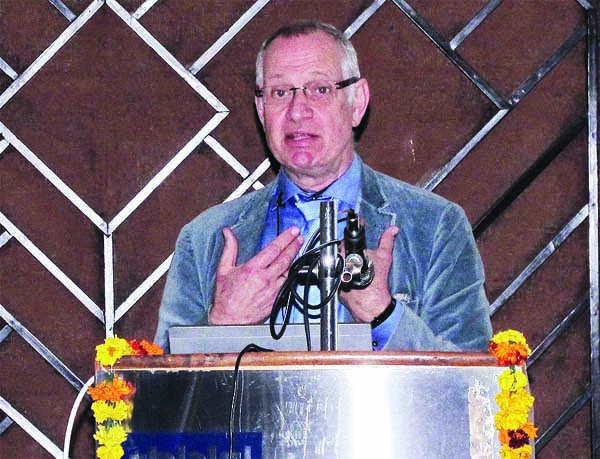
At the two-day 15th CESS Training Program on Printing and Surface Proper–ties Evaluation of Paper at the Central Pulp and Paper Research Institute (CPPRI), Saharanpur, held on 19 and 20 January 2016, Andreas M Verhoeven, area manager at IGT Test Systems, talked about various problems in print. Highlighting the problems related to substrates and the associated responsibilities to be undertaken while producing substrates, Verhoeven said, “You as a producer of substrate will find slowly more and more environmental regulation from the government. You cannot dump waste water in the river or blow everything in the air. You must use environment-friendly raw material to make your products. This means that you are in the course of continuous learning because everything is changing and this also means that we have been facing problems in printing constantly. Also in printing we see more and more higher TACT (Total Area Coverage of Images) on paper. In the past we found only less amount of images and text. But these days, the complete sheet is filled with colors and it is really a beauty to see. So there is more and more ink on a single page – which means there is higher chance of goof-ups on the page.” Verhoeven also talked about IGT Test System’s history, development on IGT test instruments, and color management and print evaluation.
Verhoeven touched upon various common printing problems such as picking, mottle, linting, roughness, scumming and others. “Picking of paper is the dam–age of the paper surface during printing operations,” At the time the printing form is lifted off the paper, the ink exerts a certain force on the paper. This force increases with an increase in viscosity and tack of the ink and the printing speed. When this printing speed exceeds a certain value, the surface of the paper will be damaged.
AK Mehra of JK – CPM, Gujarat, gave an overview of printing process, packaging board quality, requirement, common printing defects and possible remedies at the training program. Mehra said, “A printing process describes the method adopted by a system to transfer the image on to a substrate. This also means that a printing system will have a medium that carries the image in the first place before it enables the process of reproduction. Mehra also discussed the expectations of converters. He said, “Converters expect excellent runnability on all machines, good printability and varnishability.” Printability demands are generally smoothness (PPS/Bendsten), flatness, gloss and print gloss, IGT Dry Pick, uniform coating and Cobb while varnishability demands are smoothness (PPS), flatness, Cobb and suitable coating formulation.






